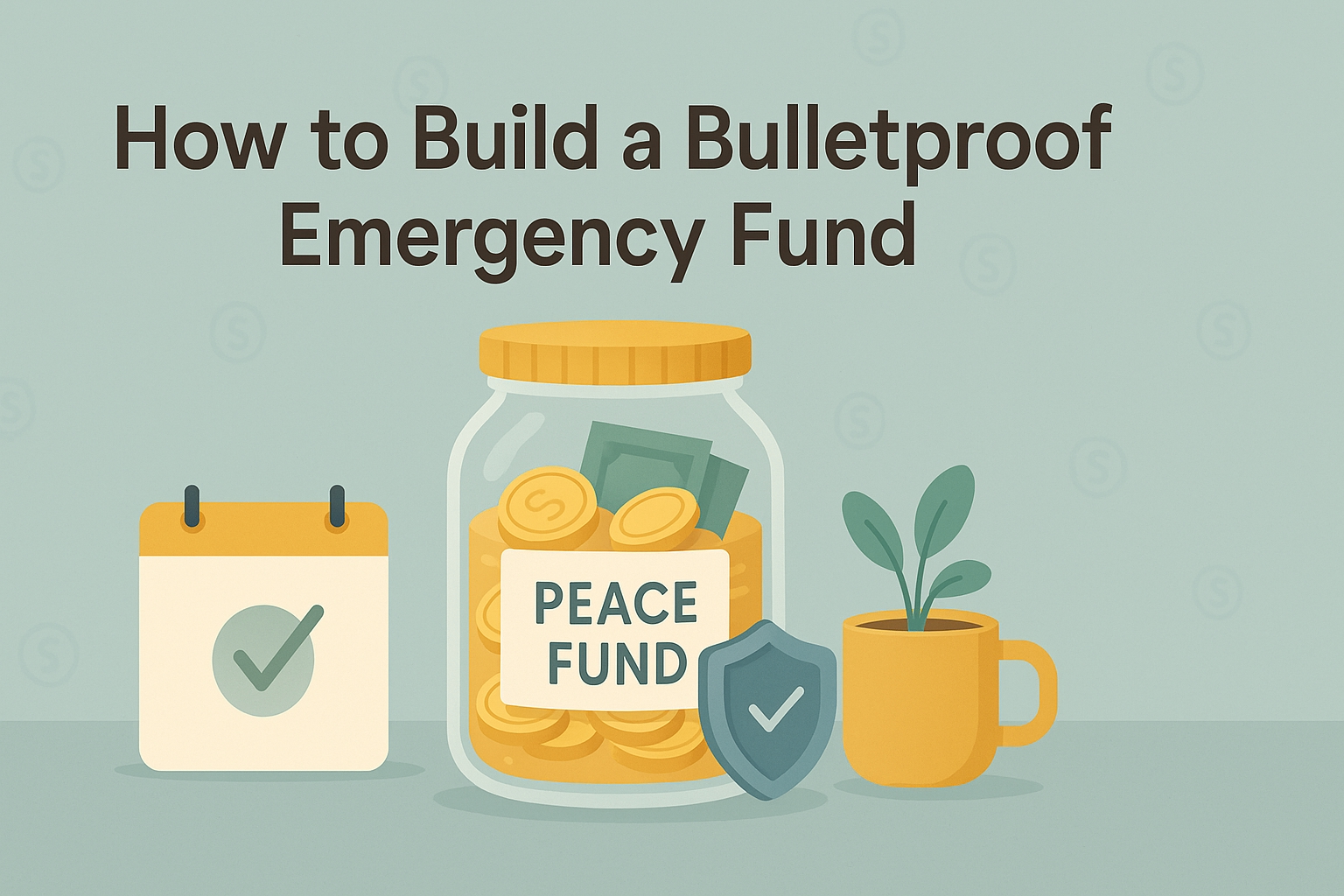
You don’t have to love spreadsheets to protect yourself from life’s little (and not-so-little) shocks. An emergency fund is simply money set aside so you can handle surprises—car repairs, job gaps, sudden travel—without panic or high-interest debt. The good news: you can build a solid fund using tiny, deliberate systems that require almost zero willpower and zero nightly budgeting ceremonies.
Start by deciding what “bulletproof” means for you. For some people it’s three months of essentials; for others it’s six months plus a cushion for freelance income dips. Choose a target that feels realistic but meaningful. The exact number matters less than creating a habit you’ll keep.
The easiest path is invisible: automate it. Treat your emergency fund like a recurring bill. Schedule a weekly or monthly transfer from checking to a dedicated savings account on payday. When your savings move out of sight, they stop being “available” and start being saved. Even $25–$50 a paycheck compounds into a real buffer faster than you think.
If automation alone doesn’t stick for you, try a nudge-friendly twist: have your employer split your direct deposit so a portion lands directly in savings. Or route windfalls — tax refunds, bonuses, birthday checks — straight into the fund. Because those amounts feel like “extra,” you’re less likely to touch them.
If the word “budget” makes you tense, swap it for micro-habits that quietly increase your savings:
These moves aren’t about depriving yourself; they’re about redirecting spending nudges into something that buys calm later.
A bulletproof fund needs to be safe, liquid, and slightly productive. Put it somewhere you can access within 24–72 hours but not so easy to spend on impulse.
Good options:
Avoid keeping funds in checking (temptation) or in the stock market (volatility) — the goal is stability, not market returns.
A common rule of thumb is 3–6 months of essential expenses. If you have variable income, are a sole earner, or work in an unstable industry, aim for 6–12 months. Don’t get hung up on perfection: starting small and growing consistently beats waiting until conditions are “ideal.”
To calculate a number quickly, total your monthly must-pay expenses (rent/mortgage, utilities, insurance, minimum debt payments, groceries, transport). Multiply that figure by the months you want to cover. That’s your target. Now break it into bite-sized steps (monthly or weekly) and automate.
An emergency fund is for true emergencies — lost job, emergency medical bills, urgent home or car repairs. It’s not a cushion for impulse purchases, upgrades, or lifestyle inflation. Create a mental rule to help you decide: “If this can wait three days and be planned for, it’s not an emergency.”
If you do use the fund, treat replacing it like a priority bill. Resume your automatic transfers immediately and, if possible, temporarily bump them up until the fund is back to target.
Frame the fund as “peace of mind” money rather than a boring finance goal. Name the account something evocative like “Peace Fund” or “Oops Fund” so it feels purposeful. Celebrate milestones — $500, $1,000, first month covered — with small, free rewards (a movie night at home, a favorite playlist). Tracking progress visually (a savings thermometer on your phone or whiteboard) gives dopamine hits and keeps you motivated without spreadsheets.
Life changes — promotion, child, relocation — mean you should revisit your target. If your expenses rise, increase your automatic contributions proportionately. If you build the fund fully and your situation stabilizes, consider splitting future savings: keep a smaller buffer and start a separate investment account for longer-term growth.
A bulletproof emergency fund is less about hitting a magic number overnight and more about constructing reliable systems that siphon money into a safe place without daily decisions. You don’t need a strict budget to get there — you just need a plan you can repeat, automatic transfers, and a few small habits that redirect spending into security. Over time, the fund becomes a quiet ally that reduces stress, preserves options, and prevents bad financial choices when life gets messy.